Recent Projects
January 27, 2018
I'm slowly getting back into creative projects. This time it's just little needlepoints.
First, I created a needlepoint star pattern that anyone can use, using the 18 stitches per inch canvas, it results in a star 2.5 inches big (a little over 6cm). It is the seba "star" or "teacher" glyph. Also the Akhu are often honored with a star. The glyph also means "gateway".
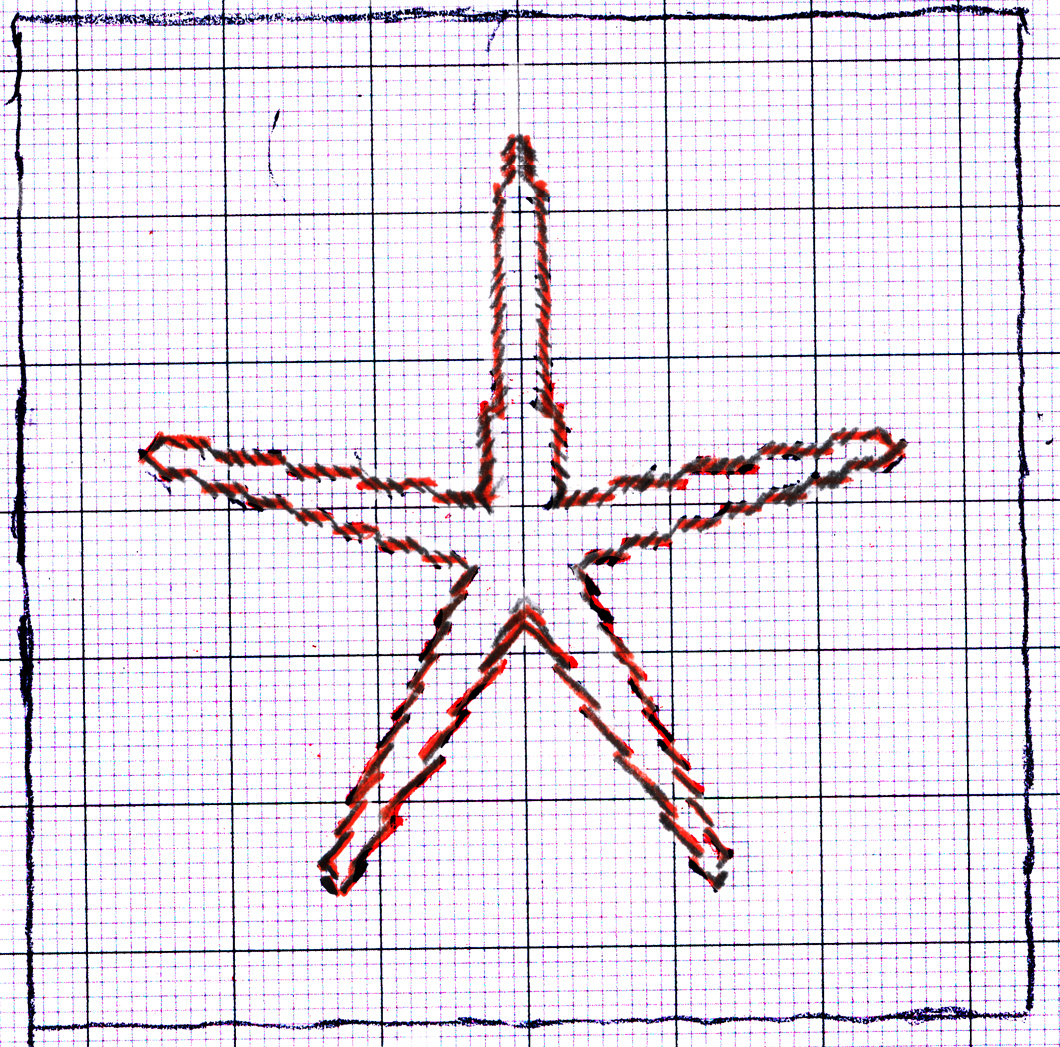
The first page in the pdf is actual size, the second page is for easier counting! I've delineated a background 68 by 68 stitches wide, but any size background could be used. A long strip of canvas with a row of stars, or a huge canvas with lots of stars, or???
Meanwhile, I had in mind a place for the 68x68 stitch version. I debated making a second seba to go at the right hand side. I figured one seba for Wepwawet above, and one seba for Aset (Isis), whose space is below:
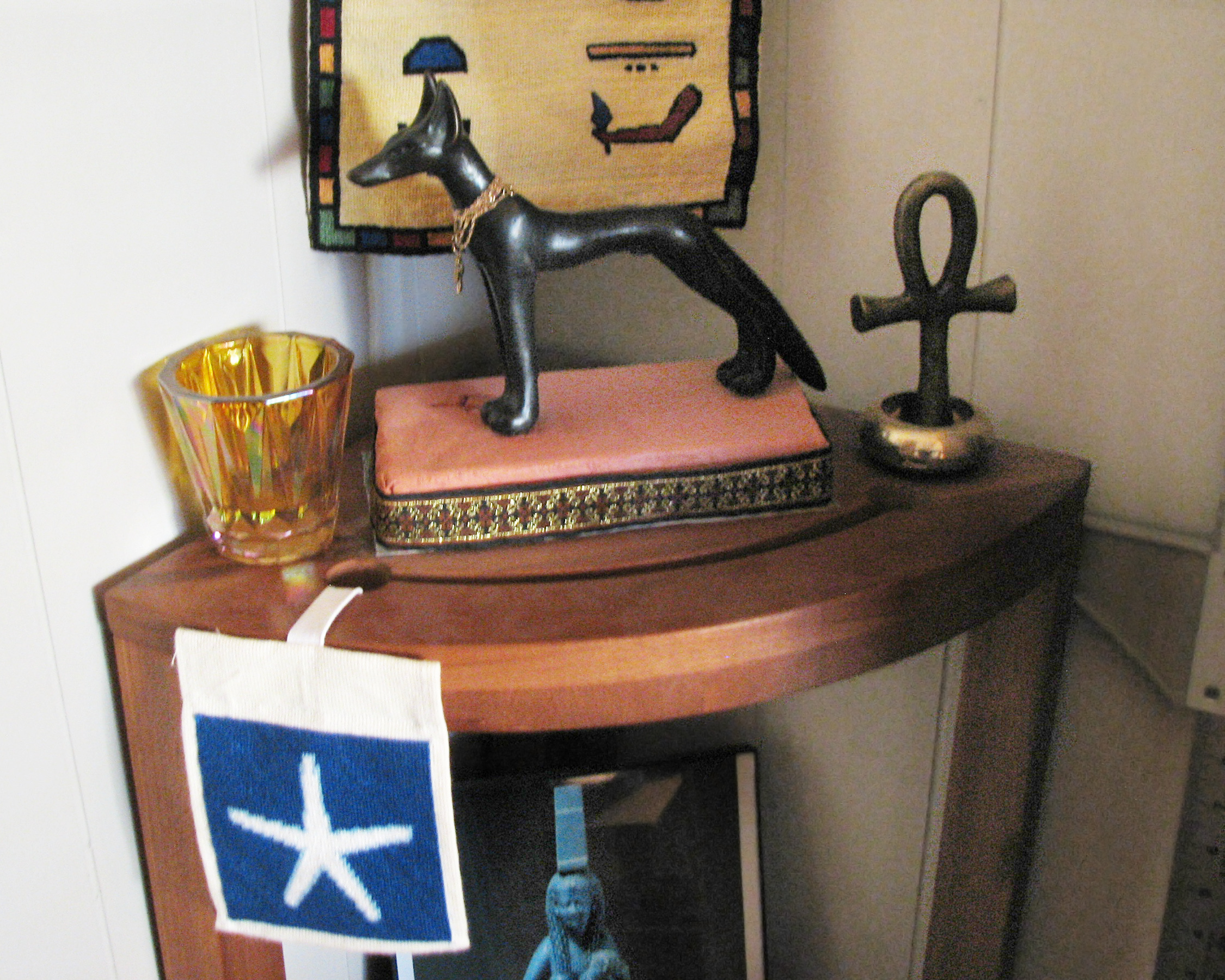
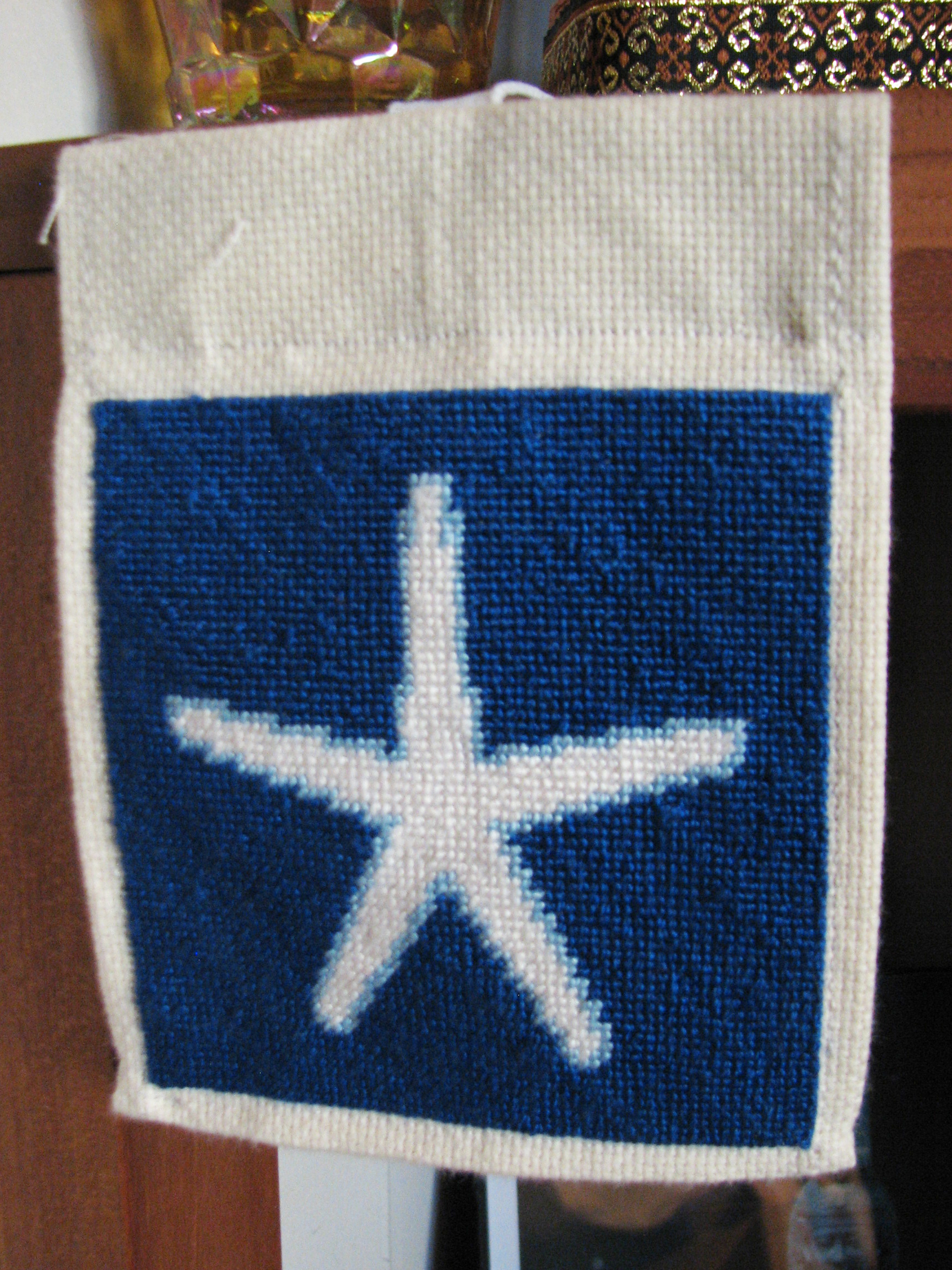
After I did the white star, I made a blue outline around it before doing the dark blue background.
While I was in process with the needlepointing, during one day's morning prayers, I got a distinct feeling from Aset that I should do a Sa hieroglyph of protection for her side, the background also the 68x68 stitches wide.
I didn't have an original drawing to go by, as I did for the seba glyph. So I gathered up several examples from the past. Horemheb's tomb features green sa amulets with very small loops:
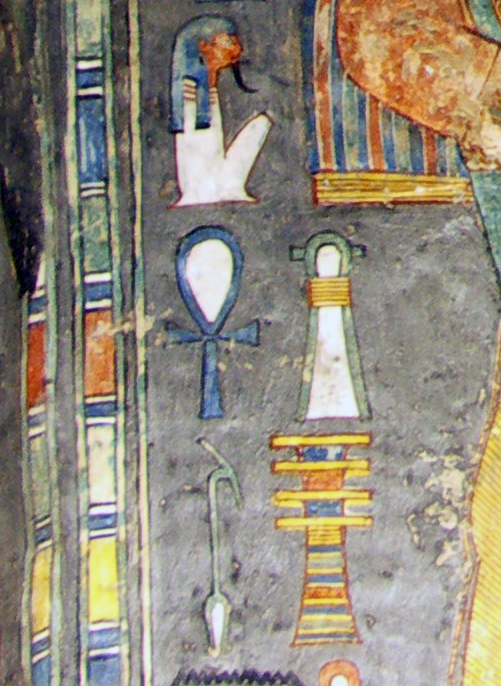
Extreme crop from a photo by William Petty
Meanwhile, an amulet found in the Middle Kingdom tomb in Deir el-Bahri features a very long loop:

Met museum photo
What to do? I looked at Wilkinson's examples:
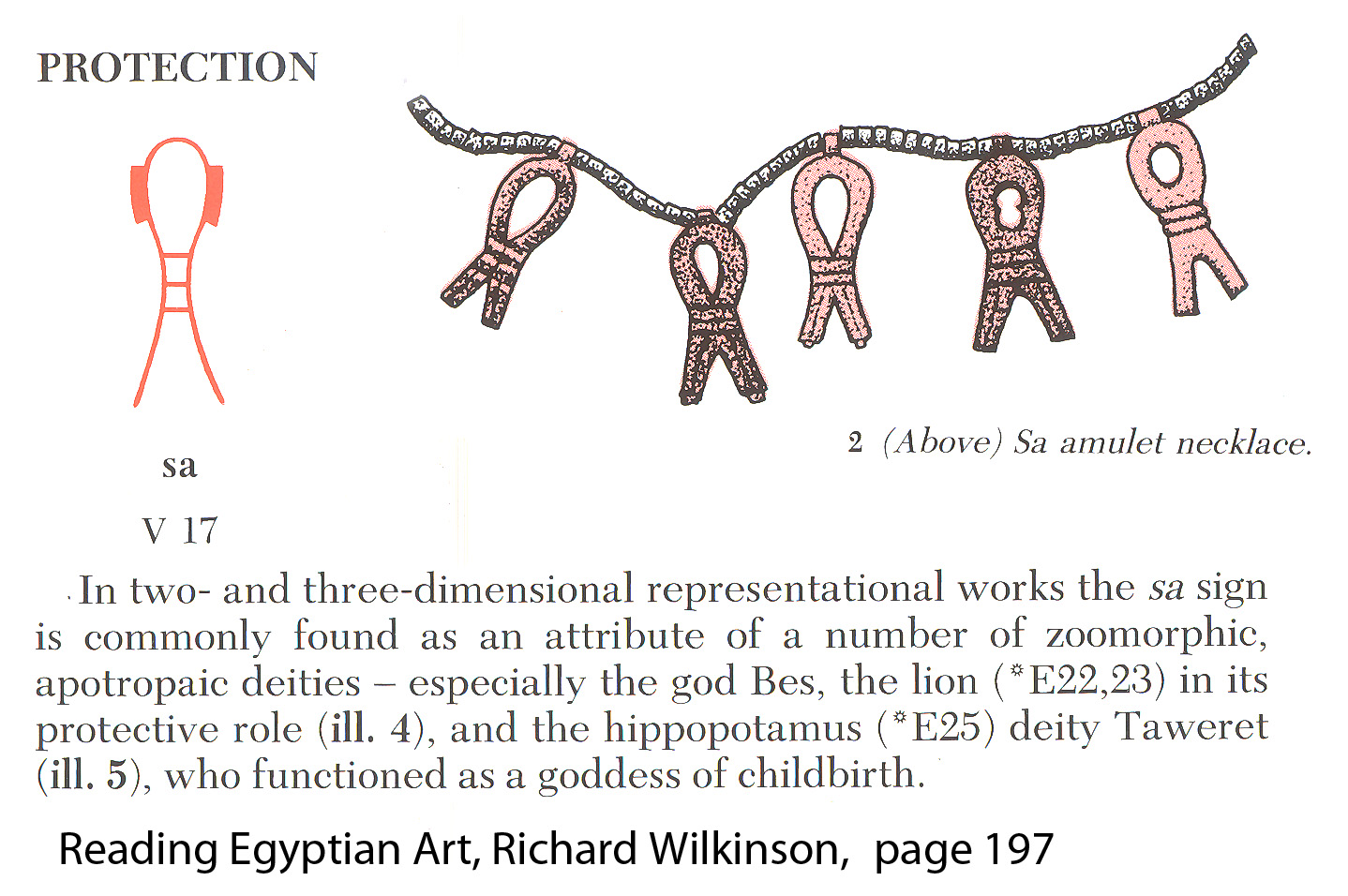
"In two- and three-dimensional representational works, the sa sign is commonly found as an attribute of a number of zoomorphic, apotropaic deities - especially the god Bes, the lion in its protective role, and the hippopotamus deity Taweret..." (Wilkinson, _Reading Egyptian Art_, page 197)
|
Boston museum's Taweret #64.2252 features a somewhat longish loop and very prominent flanges:

Crop from a photo I took.
Ultimately, I used one amulet from the necklace of Senebtisi which is now at the Met museum. I rotated that one amulet, enlarged it, made it symmetrical and enlarged it greatly. This amulet resembles those in one of Wilkinson's examples as well:

Crop from Met museum photo
I screen captured the needlepoint grid and enlarged it. Then I selected out 68 stitches high and got the sample large enough to nicely fit. (The off-center placement is because I was using the darker lines which divide into 10s as a guide. When I darkened my image, the distinction got a bit lost later.) Using Photoshop's layer abilities, I copied the sample again, but made it 50% transparent. I created another layer above that. On that layer, as I could see both the example's form and the grid, I determined the stitch placement. Julia recommended that I create a suggestion of flanges on the sides, and after doing that, I was happy.
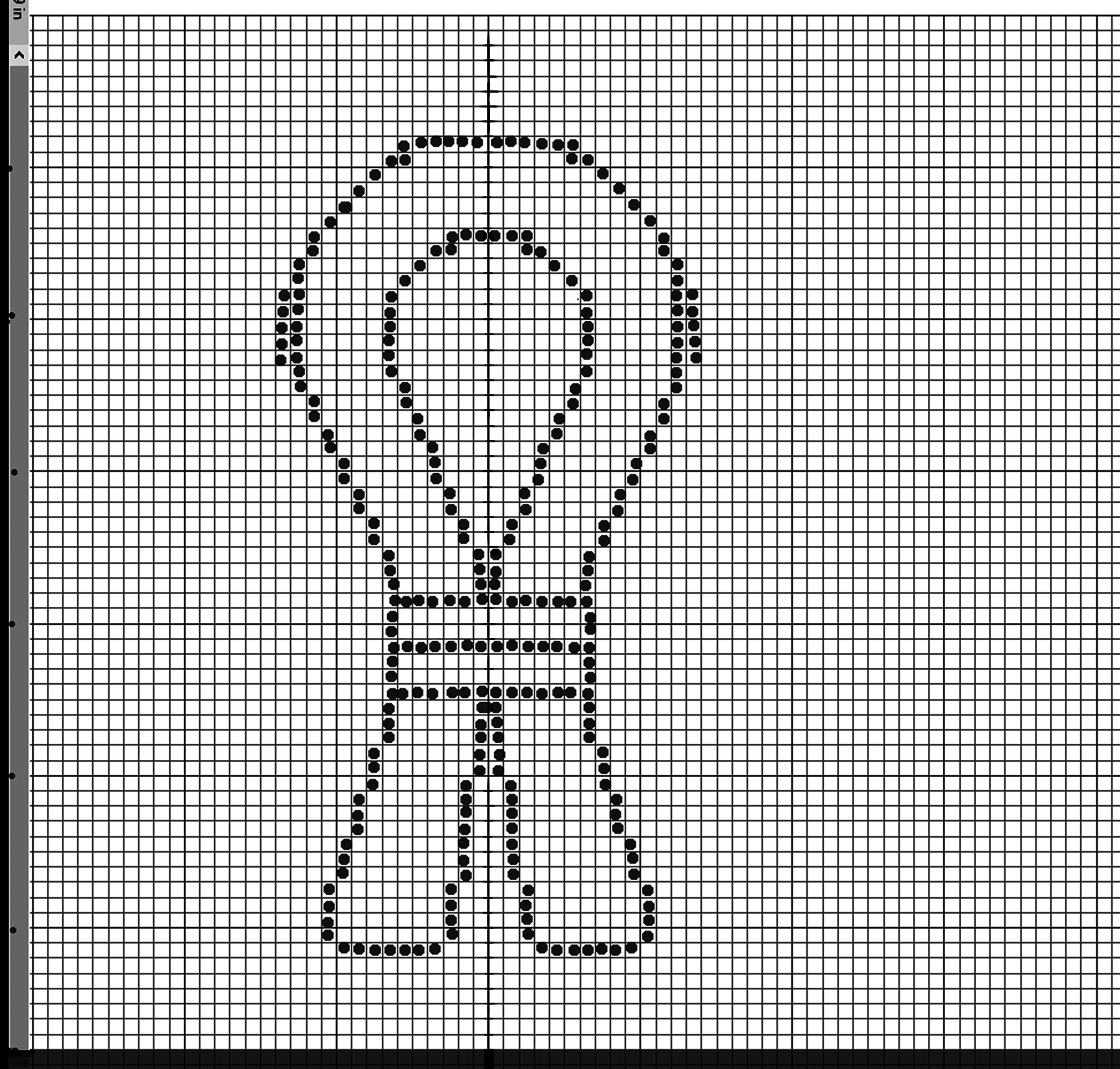
Afterwards, I realized I positioned the sample a little low. Its proper placement is seven down from the top, seven above from the bottom.
I'm envisioning a white sa glyph, with a dark pink outline and a maroon background.
Some Adjustments!
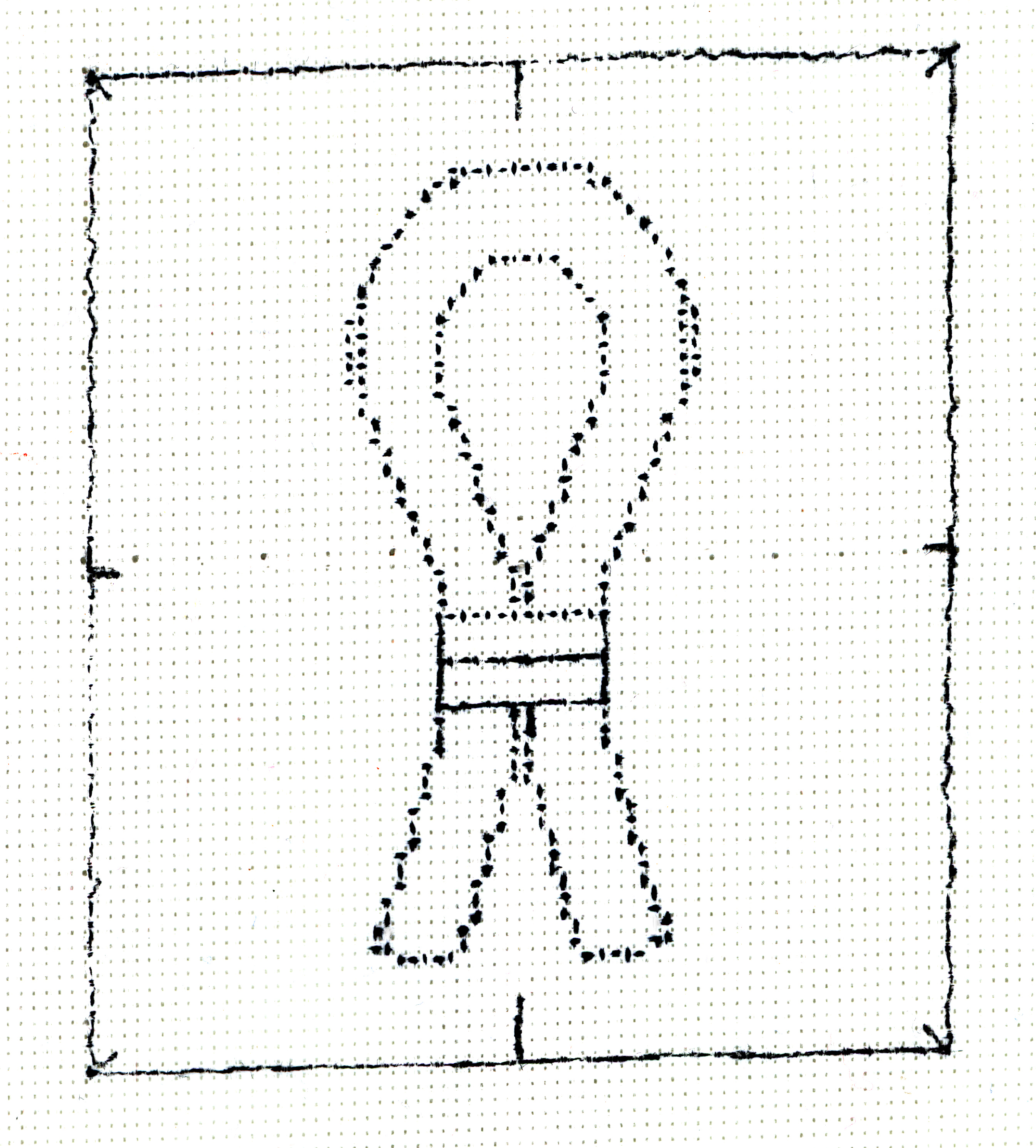
I hadn't realized this, the vertical is longer than the horizontal on the canvas! This has caused adjustments to the design.
Some More Adjustments!
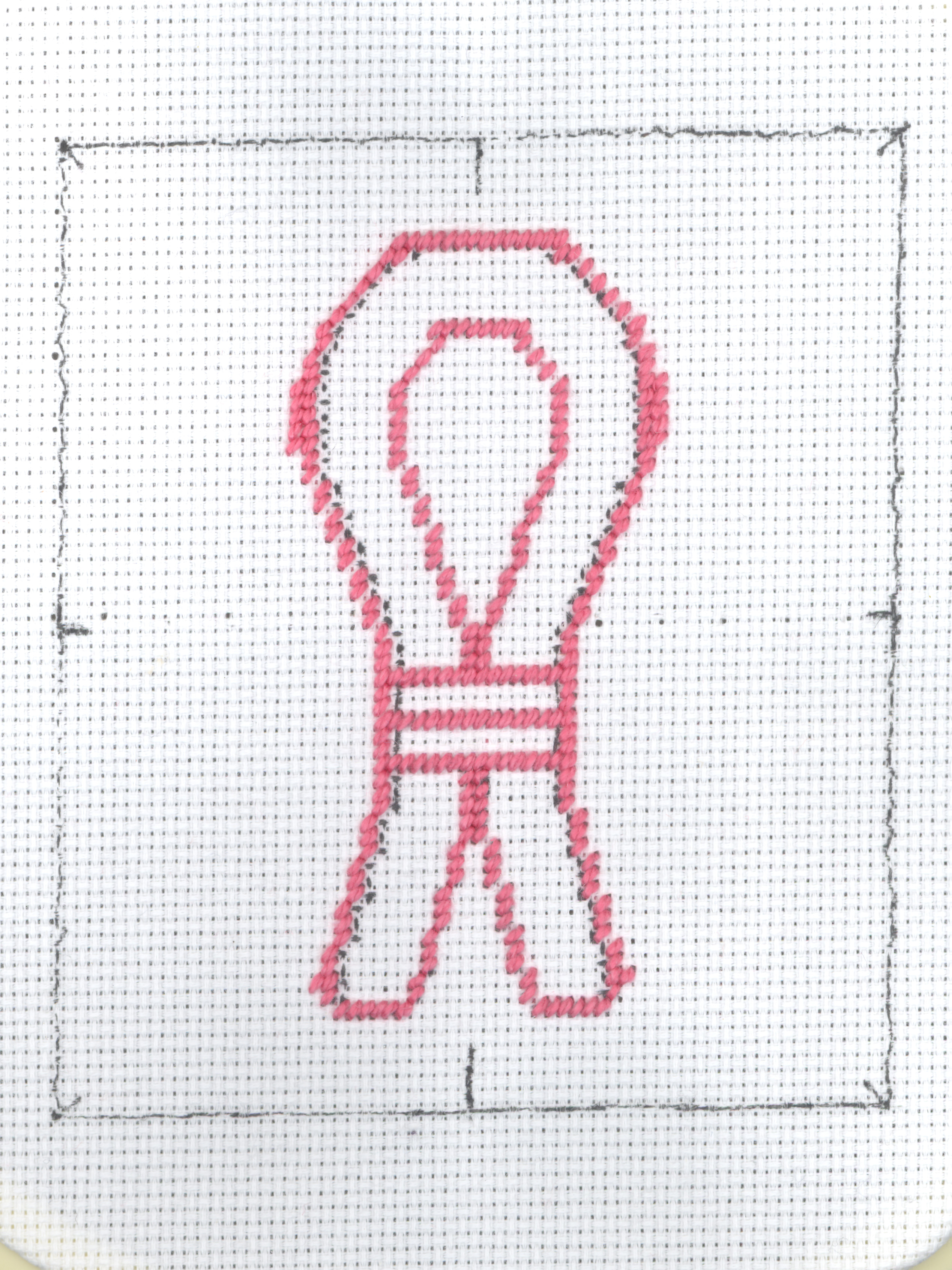
I went one "pixel" wider on each side of the horizontal to balance the longer vertical.
I've adjusted the pattern to reflect these changes.
|










